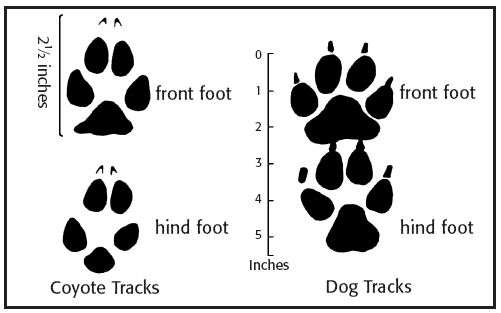Although now commonly found throughout the entire state of Wisconsin, the coyote was historically absent from much of the Great Lakes basin. This nocturnal/crepuscular animal favors prairies, brushy areas and wooded edges, which was not the most abundant type of habitat once found in Wisconsin. The coyote's range and population currently continues to grow in size. However, because of both habitat fragmentation and the coyote's human tolerant behavior. It is one of the few mammals actually benefitting from habitat loss and destruction.
 This canid is an intelligent and cunning animal. Many people consider it to be a nuisance and it is the coyote's wily behavior which lends to its unpopular persona. Farmers, livestock owners, and suburbanites/city-dwellers often express anger over the opportunistic animal. As the coyote's range continues to grow, so too does competition for food. A desperate coyote may pick off a cat or small dog if hungry enough. Coyotes have found cities and suburbs suitable places to live with plenty of garbage and pet food available for scavenging. It is important to remember however, that coyotes have an important ecological value. They help control rodent, rabbit, goose and feral cat populations both in rural and urban areas.
This canid is an intelligent and cunning animal. Many people consider it to be a nuisance and it is the coyote's wily behavior which lends to its unpopular persona. Farmers, livestock owners, and suburbanites/city-dwellers often express anger over the opportunistic animal. As the coyote's range continues to grow, so too does competition for food. A desperate coyote may pick off a cat or small dog if hungry enough. Coyotes have found cities and suburbs suitable places to live with plenty of garbage and pet food available for scavenging. It is important to remember however, that coyotes have an important ecological value. They help control rodent, rabbit, goose and feral cat populations both in rural and urban areas.
The coyote's diet is made up of 90% mammals. It will eat most mammals smaller than itself, but prefers to scavenge fresh carcasses. A small amount of its diet is made up of fruits, vegetables, frogs, snakes, birds, fish and even insects, most often in the Fall. The coyote prefers to hunt alone or in small familial groups. If hunting in a group, it uses its quick speed and cooperative behavior to chase down larger prey. A small group of coyotes will work together to take down a mammal as large as a deer. Predators of the coyo te include humans, wolves, cougars and black bears. Adult coyotes will also sometimes eat coyote pups.
te include humans, wolves, cougars and black bears. Adult coyotes will also sometimes eat coyote pups.
The monogamous coyote breeds once a year between January and March. They give birth in the Spring to an average litter of 6 pups. The pups are born fully furred with eyes closed and start eating food regurgitated by its mother at 3 weeks. The inquisitive coyote will start hunting by the age of 3 months old and venture out on its own between the ages of 6 - 9 months. The male coyote contributes some to the care of young, bringing the pups food and watching over the den.
Fun Facts: 
- The coyote communicates, like the wolf, through howls and yips. In comparison, the wolf's howl is much deeper and yips much less frequently.
- The coyote typically lives between 6 to 8 years of age, but can live to be 15 years of age in captivity.
- A coyote readily hybridizes with domestic dogs and occasionally with the gray wolf.
- A coyote is fast! It can run for short spurts at speeds of 35 mph.
- The coyote's latin name, Canis latrans, means "barking dog." Its common name it believed to have come from the Aztec word coyotl meaning the same.
- The coyote is sometimes also referred to as the "brush wolf" or "prairie wolf."
- A wolf's den is made up of a series of tunnels that lead to a large 3 to 4 foot deep hole.
Click here to read a delightful story about urban coyotes written by a coworker.
* This article was written with the help of Mammals of the Great Lakes Region by Allen Kurta, Mammals of Wisconsin by Stan Tekiela, and the Wisconsin DNR's website.
* Picture of howling wolf by Jeffrey Rich. Coyote and pup picture from true-wildlife.blogspot.com





